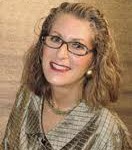Insights and Inspirations from AFP Congress 2012
Fabulous theatre, inspiring and instructive professional Development!
AFP Toronto Congress has now been over for more than one week and while it seems longer than that in many ways, we are now bringing our experiences to life in our practice.
My personal reasons for attending are as follows:
- Adding to my body of knowledge in our profession of fundraising
- Connecting with fundraisers and learning about their needs
- Identifying dynamic presenters and original ideas to include at conniehubbs.com
The plenary sessions were outstanding this year and anyone attending can attest to the amazing talent and creativity that we saw, especially in the Fundraising Theatre on the last day and Don Tapscott with his jazz improv session. Just fantastic!
Here now is a brief review of the workshops I attended and the takeaways. (Some of the ideas and presenters will show up at conniehubbs.com over the next year.)
1. Beyond Small-Town Fundraising: Grassroots and Rural Development.
I was already familiar with the wonderful and experienced Cynthia Armour who was one of my first three presenters last year. Cynthia uses humour and warmth to connect with her audience and she really knows her fundraising.
Shelley Allison from New Brunswick was new to me and I was very impressed with her quiet command of her topic. She is an effective communicator and has proven a strong and able leader of Big Brothers/Sisters and Boys & Girls Club. She shows us what is possible in a small town area like the Miramichi. One challenge in this area is the new and emerging generation of donors. Will they support their community as their parents did?
 Next was The Philanthropic Mind: Getting to Know Canada’s Top Philanthropists led by Matthew English and Mo Lidsky. Many of us were intrigued to see what they had learned and included in their new book.
Next was The Philanthropic Mind: Getting to Know Canada’s Top Philanthropists led by Matthew English and Mo Lidsky. Many of us were intrigued to see what they had learned and included in their new book.
They got very good access to some of our wealthiest donors and heard a lot about what they love/hate about working with charities.
One disturbing section reported some expectations of rewards for giving that would violate AFP fundraising ethics. This ranged from the relatively benign request for a special parking place at the facility they are supporting, such as a hospital to wanting to jump queues for medical treatment. Mo had a seminal story of a million + donation to a medical school withdrawn when the donor’s son was not admitted. We also heard of a doctor soliciting a wealthy patient as he was going under for surgery. Ethics horror stories? What you know about you can begin to address so this was a fascinating session.
 Surprisingly after all these years at AFP Toronto, I had never had the pleasure of attending a session with Kay Sprinkel Grace. She had us in the palm of her hand. If you have not had the pleasure, make sure you catch her.
Surprisingly after all these years at AFP Toronto, I had never had the pleasure of attending a session with Kay Sprinkel Grace. She had us in the palm of her hand. If you have not had the pleasure, make sure you catch her.
Perhaps it will be on a webinar at conniehubbs.com.
 Tuesday I began the day with a case study presented by Sharon Lee on Reaching Diverse Communities.
Tuesday I began the day with a case study presented by Sharon Lee on Reaching Diverse Communities.
She reported on original work with Muslim, Tamil and Sikh communities. Very fruitful and very valuable!
I hope to include this work in an upcoming session with conniehubbs.com. Stay tuned.
Umeeda Switlo of CUSO then presented a case study on her experiences in Rwanda working with a local mental health organization to build revenue, self esteem and hope with some social enterprises she helped them start. Umeeda said ‘I started my assignment by trying to understand what the organizations needed. I had never worked with deaf, blind or physically handicapped people, or people with mental health challenges, so there was a real learning curve. I decided to work with those that had the biggest financial challenges, UPHLS, an umbrella organization working with people with disabilities and HIV/AIDS, and NOUSPR, a national organization working with users and survivors of psychiatry. I was so happy to hear that the organizations didnot want to be dependent on funds from outside the country.
Notable was the powerful symbol of the kite. They began to create large kites that can be flown and tiny kites as pins and a symbol. Together we created a branding and fundraising tool for NOUSPR, a lapel pin of a kite made of traditional kitenge cloth and beads. The kite symbolizes the hopes and dreams of those that suffered from mental illness. It could be a great in-country fundraiser, with people proudly wearing the pin in support of the organization. What was best was that a cooperative for women with mental health challenges made the pins, earned money and raised funds for NOUSPR.ization.
Umeeda will present on this inspiring topic April 4, 2013 at conniehubbs.com
I took the opportunity to attend two sessions with Laura Fredricks who is one of the most seasoned and respected fundraising leaders in our profession.
Laura is notable for her insights, her depth of knowledge and how she engages us all in the session to move the discussion forward. Excellent!
 Last and a great way to end was Simone Joyaux. Her challenging session stimulated us to envision a path to non profit leadership. Do not be mere technicians! Read about the wider issues of non profit governance, financial management, human resources and much more.
Last and a great way to end was Simone Joyaux. Her challenging session stimulated us to envision a path to non profit leadership. Do not be mere technicians! Read about the wider issues of non profit governance, financial management, human resources and much more.




